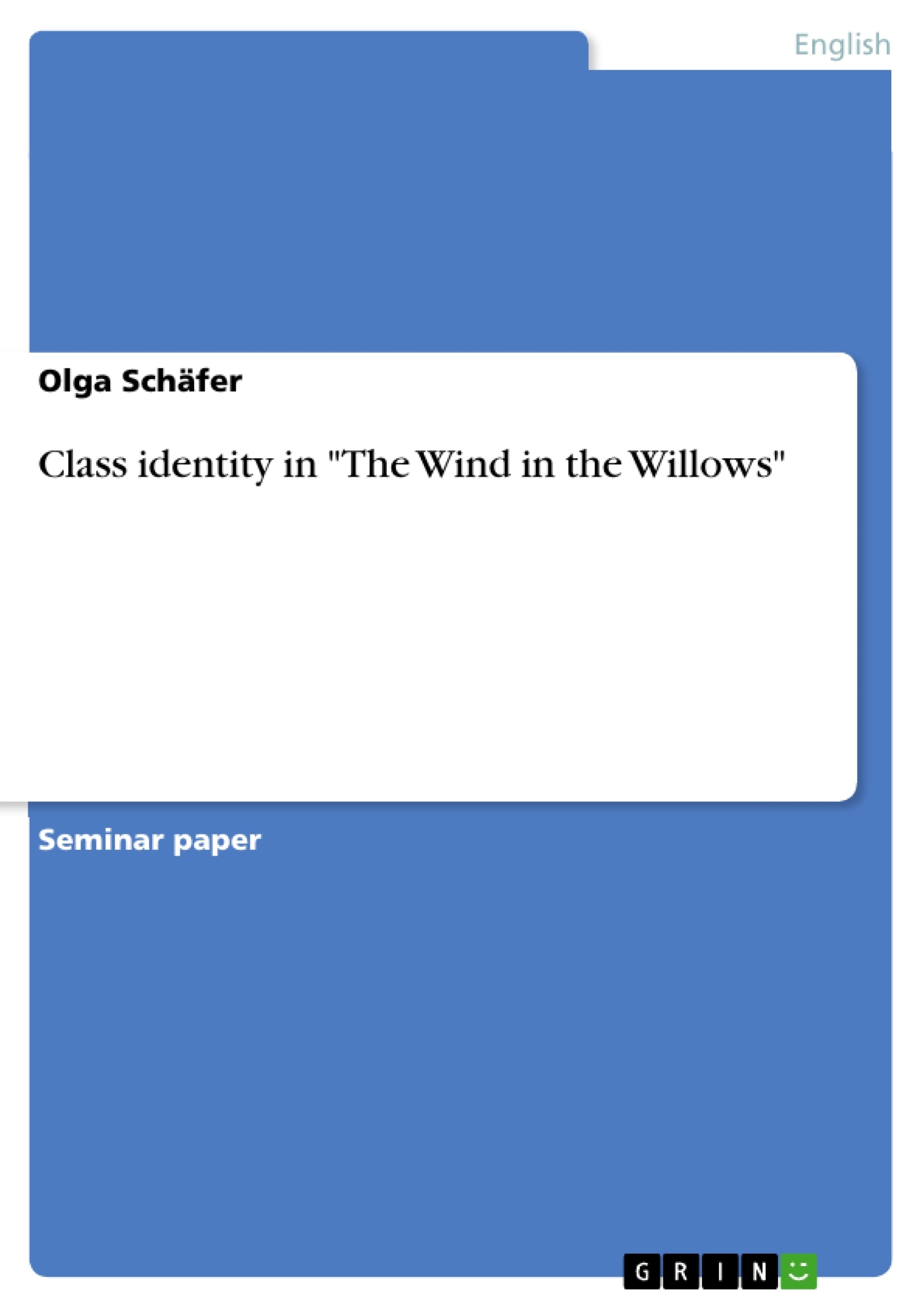Having been published in 1908, a time of social unrest, anarchy and revolution in England (Carpenter 1985, 165), The Wind in the Willows is now over one hundred years old and has become a canonical and popular work of literature, beloved by adults and children alike.
The plot of the novel is based on two interlocked narratives: the Bildungsroman of Mole, who is initiated into the well-established, domestic society of the River-Bankers and the story of the adventurous, over-excessive, nouveau-riche Toad who is brought to reason by his friends in the end. The values of the dusty highway and the wide world are contrasted with the warmth of the homely riverbank so that preferences among the audience are inclined to emerge. Mendelson (1988, 127) declares that adults tend to prefer the coziness of the riverbank and the fellowship between Mole, Rat and Badger and that children on the other hand love the adventures of Toad.
In contrast to the reality in Britain at the time of the novel's publishing, the world of the River-Bankers is an idyllic bachelors' Arcadia free of sorrows, death and sex. It represents an insulated society that is protected from the Wide World and has its own unquestioned hierarchical social arrangements. However, as Carpenter states it, “there is little evidence that Grahame took [this] kind of interest in current social events“, even though Peter Green (in his biography of Kenneth Grahame) argues that the story has “an unmistakable social symbolism” (Carpenter, 165). He is inclined to see it as accidental coloring acquired because of the time the novel was written in rather than the author's specific purpose. As it is a very complex piece of literature, many different readings as well as interpretations exist, not only with regard to underlying second meanings.
Table of Contents
- I. Introduction
- II. Class Identity in The Wind in the Willows
- 1. Introduction of author Kenneth Grahame
- 2. Indicators of Class Identity in The Wind in the Willows
- 2.1. Locations
- 2.1.1. The River and the River Bank
- 2.1.2. Toad Hall
- 2.1.3. The Open Road
- 2.1.4. The Wild Wood
- 2.2. Characters
- 2.2.1. Mole
- 2.2.2. Rat
- 2.2.3. Toad
- 2.2.4. Badger
- 2.2.5. Otter
- 2.2.6. Creatures of the Wild Wood
- 2.2.7. Female figures
- 2.3. Language
- 2.4. Narrative Devices
- 2.1. Locations
- III. Conclusion
- IV. Works Cited
Objectives and Key Themes
This term paper aims to explore how class identity in Kenneth Grahame's The Wind in the Willows is created through the descriptions of locations, the behavior of the animals, their language, and the narrative technique. The paper will examine how the book can be interpreted as a social parable reflecting the social unrest and the threat to the stability and values of the English middle class in the early 20th century. It will also explore the author's own background and how it might have influenced his depiction of class dynamics within the novel.
- Class identity in Edwardian England
- The significance of locations and landscapes in shaping class identity
- The role of language and behavior in signifying social status
- The interplay between individual characters and the overall social order
- The influence of authorial background on the portrayal of class dynamics
Chapter Summaries
The introduction provides context for the novel, highlighting the social unrest and upheaval in England at the time of its publication. It introduces the two main narratives: Mole's Bildungsroman and Toad's journey of self-discovery. The chapter also discusses the contrasting values of the River-Bankers and the Wide World, and the potential for audience preferences to emerge based on these contrasting perspectives.
The second chapter delves into the concept of class identity in The Wind in the Willows, suggesting that the book can be interpreted as a social parable demonstrating the social unrest and the threat to the stability of the English middle class. It explores how the different members of a certain class are aware of their social position and the overall social order, and how they behave according to their own social code.
The following section introduces the author, Kenneth Grahame, and his own upbringing in a secure and stable Victorian world. It explores how his personal experiences, including the death of his mother and the social changes happening in Britain, might have influenced his writing. The chapter concludes by suggesting that Mole represents the author in a quest for self-discovery.
The next section examines various indicators of class identity in the novel, including the age, size, and behavior of the animals, as well as the locations and language used. The chapter explores how locations in the book, such as the river, riverbank, Toad Hall, and the Wild Wood, serve as symbols of class and social order. It also discusses how the characters' behavior and language contribute to the overall picture of class dynamics in the novel.
Keywords
The main keywords and focus topics of this term paper include: class identity, social unrest, Edwardian England, The Wind in the Willows, Kenneth Grahame, locations, characters, language, narrative techniques, social order, middle class, symbolic landscapes, river, riverbank, Toad Hall, Wild Wood, Bildungsroman, nouveau-riche, paternalistic society.
- Citar trabajo
- Olga Schäfer (Autor), 2014, Class identity in "The Wind in the Willows", Múnich, GRIN Verlag, https://www.grin.com/document/283220



